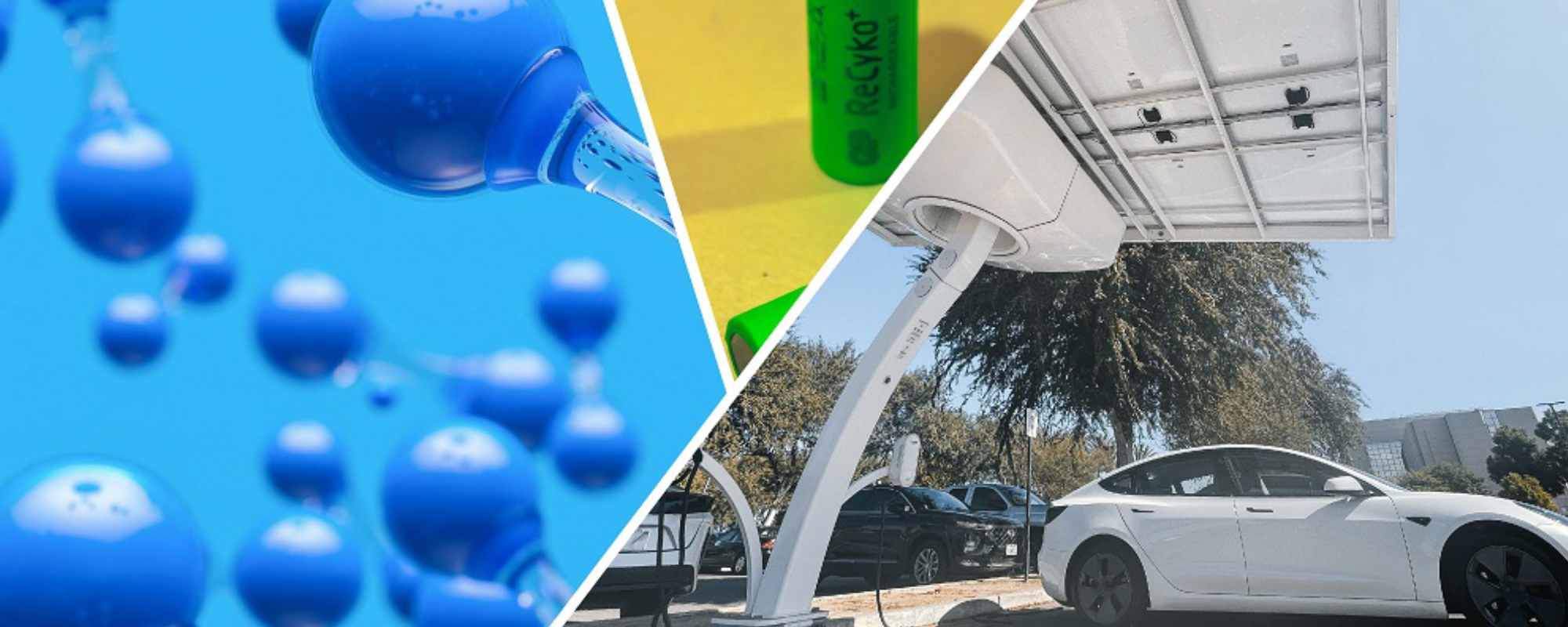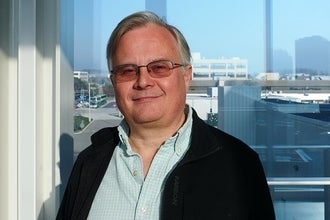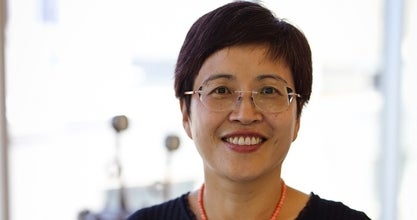
Theme Overview
The transition to a sustainable modern society in a global economy relies on systems for the efficient interconversion of chemical and electrical energy. Electrochemical energy systemsfor power generation and storage, including fuel cells and electrolyzers, batteries and supercapacitors are designed in our laboratories. Leveraging nanotechnology for advanced materials synthesis and characterization, and with the help of modern computer simulation and modeling tools, our researchers develop and test new electrochemical devices for sensing and energy, optimize their function and investigate their large-scale application.
Professor Pu Chen

Professor Pu Chen's research in energy storage and conversion focuses on lithium batteries. Ongoing studies cover all battery systems aspects such as nanostructured anode materials for lithium batteries, cathode material fabrication through layer-by-layer self-assembly, lithium-ion solid state conductors, sulphur surface tension and contact angle in various pressure and temperature environments and preparation of catalysts to improve electrode functionality.
Professor Eric Croiset

Professor Croiset’s research interests are in developing high-temperature fuel cells and electrolyzers. The temperature can be as high as 800 degrees Celsius. He designs two types of solid oxide cells. The first is Solid Oxide Fuel Cells (SOFC) which generate electricity. The second type is Solid Oxide Electrolysis Cells (SOEC). In this type of cell, electricity goes into the cell to reduce H2O, to H2 and/or CO2 into CO. Using SOEC with simultaneous reduction of CO2 and H2O splitting creates a mixture of H2 and CO called synthesis gas which can be used as a feedstock to produce bulk chemicals and sustainable aviation fuel. This is an emerging technology Croiset is developing.
Solid Oxide cells have two electrodes on each side of a solid electrolyte. Oxygen goes from one electrode to the other one through the electrolyte which is good at conducting the oxygen ion at a high temperature. An important benefit of using high temperature is that you don’t need a precious metal as an electrocatalyst, it is also a more efficient process. Croiset also designs advanced materials to construct fuel cells which are made from ceramic materials. He is creating reversible cells that can run both ways.
Professor Michael Fowler

Professor Michael Fowler's research focuses on models of electrochemical energy storage, distributed energy (e.g., wind and solar), and large-scale systems that uniquely consider the impact of providing energy to zero-emissions vehicles (ZEVs), battery electric vehicles (BEV) and hydrogen for fuel cell vehicles (FCV), as well as the convergence of natural gas distribution and electrical transmission systems.
The focus of his research is to enhance energy systems by utilizing Power-to-gas (hydrogen) and microgrid modelling, optimizing powertrain configurations, and enhancing the reliability of battery packs. Through a distinctive co-design methodology, his research team strives to improve the incorporation of Zero Emission Vehicles (ZEVs) into a cleaner energy generation system that can accommodate various energy sources such as renewables, hydrogen, and electricity. His research also includes the of battery development for testing for the design of Battery Testing Management Systems (BMS), battery testing, testing for battery thermal systems, and the design of metal-air battery testing.
Professor Jeff Gostick

Professor Jeff Gostick has developed his own unique software called OpenPNM which uses a technique known as pore network modelling that is several orders of magnitude faster than conventional modelling approaches for equivalent problems. Researchers use Open PNM to understand how the transport of chemical species in electrochemical devices impacts their performance and learn how to engineer improved electrodes.
Gostick Director of the Porous Materials Engineering & Analysis Lab also uses machine learning AI to speed up calculations. In a recent study on Li-ion batteries, his research group trained an AI to predict the state-of-lithiation in individual particles just by analyzing an image of the electrode structure. State-of-lithiation can be used to predict battery degradation, such as particle cracking. Conventional simulation tools take over a month to predict this, while the new approach developed in his group has reduced this time to just minutes.
Professor Yuning Li

Professor Yuning Li is at the forefront of designing new materials for batteries, specifically focusing on their application in electric vehicles and clean energy systems such as solar and wind energy storage.
Li's groundbreaking research is centred around addressing several pivotal challenges in battery development: reducing costs, improving durability, enhancing safety, and increasing energy density. With his profound expertise in polymers and nanomaterials, he leads the development of cutting-edge materials that effectively tackle these challenges.
Another fascinating area of Li's research lies in the development of flexible batteries, supercapacitors, and organic solar cells as power sources for wearable electronics. These devices are meticulously engineered to provide compact and lightweight energy solutions for wearable sensors, enabling continuous monitoring of personal health and environmental conditions. Leveraging the unique capabilities of polymers and nanomaterials, flexible batteries and supercapacitors can be conveniently integrated onto diverse flexible substrates such as plastics and fabrics. This seamless integration holds immense potential for wearable electronic devices, presenting thrilling possibilities for the future.
Professor Michael Pope

Professor Michael Pope’s research group designs next-generation battery materials and energy storage devices such as supercapacitors. Pope, Director of the 2D Materials and Electrochemical Devices Lab focuses on using 2D materials as a tool to create improved batteries with materials that have a higher energy density than lithium-ion batteries. Pope investigates using alternative materials to design batteries such as sulfur, zinc, and graphene. Pope’s research group has expertise in bottom-up assembly approaches for energy storage. The group investigates conductive nanomaterials, which have a high surface area as promising materials for a variety of electrochemical devices.
Professor Yverick Rangom

Professor Yverick Rangom develops faster charging, “transportation-grade” Li-ion batteries for the EVs of tomorrow. Li-ion batteries will be with us for at least 10 more years, and they will carry us into mass electrification of transportation. Therefore, optimizing the performance of common Li-ion batteries is essential to our immediate future. The secret and most efficient way to improve the movement of charges inside a cell is to optimize their transport through the various interfaces inside the cell. An interface is essentially a discontinuity, i.e. a border to cross. They naturally impede the movement of charges across them. This is where Dr. Rangom’s research is focused.
Professor Rangom is also interested in the development of new composite materials. To achieve these the best possible optimized charge conductive interfaces, Dr. Rangom works on simply eliminating them to replace them with gradual material transitions as the best interface is no interface at all. Developing functional joints between different battery materials at the micro and nano-level between micro-size and nanosized particles provide permanent and robust pathways for a charge to move around that promote two functionalities: conduction of charges and mechanical robustness. These new functional joints or interconnects must at the very least offer the said functionalities, but they must also be chemically inert or compatible with the harsh chemistry inside a Li-ion battery, cost-effective to form presenting a significant challenge to the new battery engineer and researcher.
Professor Aiping Yu

Professor Aiping Yu is engineering graphene for energy storage for use in Zinc-ion and Na-ion batteries. She is using 2D materials to increase the energy and power density of batteries. Yu, Director of the Applied Carbon Nanotechnology Laboratory is also engaged in developing battery recycling as lithium is becoming a scarce commodity, so it’s crucial to be able to recycle the lithium from old batteries.
Yu is also engaged in carbon dioxide conversion. She utilizes electrochemical conversion; through an electrochemical cell, she converts carbon dioxide into other small-chain chemicals such as methane.